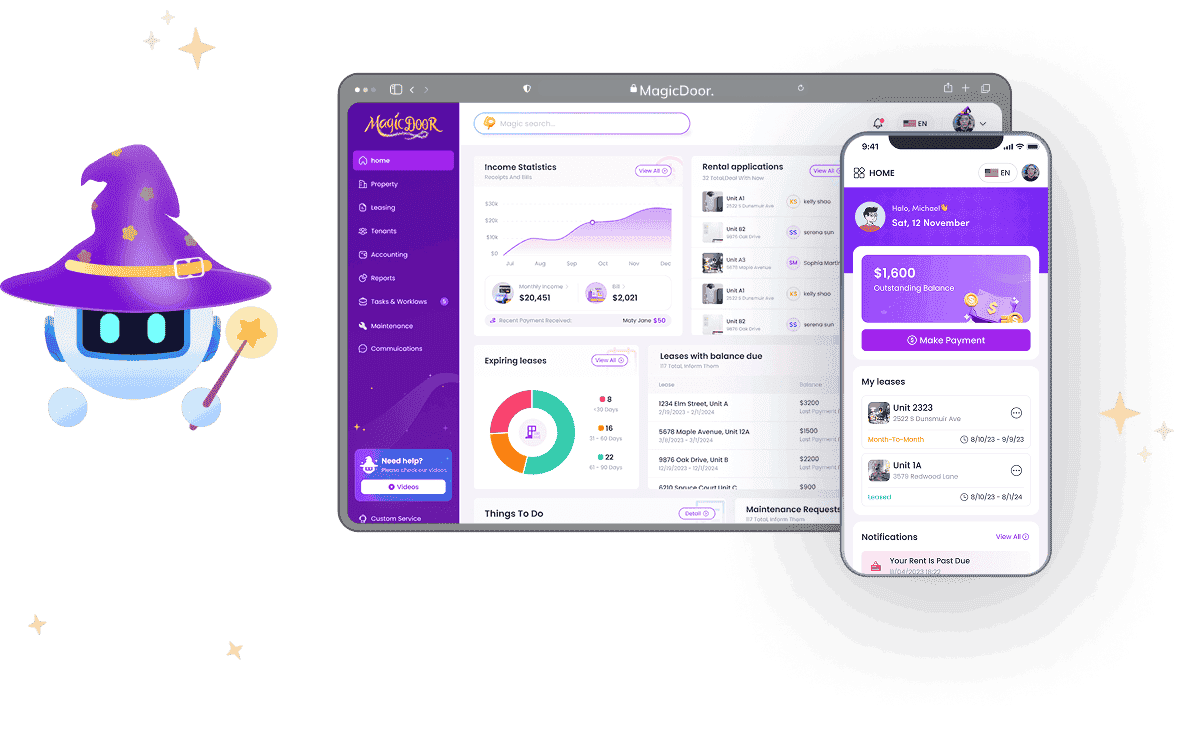Rent is late again.
A repair slips through the cracks.
Tenants send five different messages, and none of them end up in the same place.
For small landlords, that’s normal. And it’s exhausting. Managing even a handful of rental properties without help means every mistake cuts into cash flow and every delay risks tenant satisfaction.
Tenant portals flip that script. They collect rent online, log repair requests automatically, and keep conversations in one shared space. Some even generate financial reports for tax season, so you’re not scrambling at the end of the year.
In this guide, you’ll see which portals are worth your attention, the features that truly save time, and how to pick the right fit for your rental business.
What is Tenant Portal Software?

Tenant portal software is a digital platform that allows tenants to pay rent online, submit maintenance requests, review lease agreements, and communicate directly with landlords or property managers.
It acts as the front-facing side of rental property management software, giving tenants a simple, secure way to handle daily property management tasks.
For small landlords, tenant portals matter because they:
- Save time by automating rent collection and generating financial reports
- Reduce miscommunication by centralizing tenant communication, maintenance tracking, and lease management
- Improve tenant experience with online rent collection, instant updates, and accessible support
In 2025, tenant expectations go beyond basic online rent payments. Renters now look for:
- Self-service options such as submitting rental applications and signing lease agreements with e-signatures
- Mobile access through apps connected to landlord software or real estate management software
- Instant updates on maintenance tracking, automated rent reminders, and property listings
Meeting these expectations strengthens tenant relationships, reduces turnover, and creates more predictable cash flow for property managers and landlords, even in smaller rental businesses.
What is Landlord Software?
Landlord software is a type of rental property management software made to help property owners and managers handle rent collection, tenant communication, and maintenance tracking in one place. It works as a central system where landlords can manage properties, lease agreements, and financial reports without juggling multiple tools.
For small landlords, landlord software simplifies tasks that otherwise consume hours each month:
- Collect rent online with automated reminders and late fee tracking
- Log maintenance requests and assign vendors for repairs
- Screen tenants with background and credit checks
- Track property expenses, tax reports, and rental income in real time
Far from complicated software built for large property management companies, landlord software focuses on ease of use.
Many platforms offer free plans, growth plans, or essential plans tailored to different portfolio sizes, from one rental property to mixed portfolios with residential properties and short-term rentals.
With features like e-signatures, online payments linked to a bank account, and customer support built into the platform, landlord software helps both property managers and real estate investors improve cash flow and manage rental businesses more efficiently.
Features to Look for in a Tenant Portal For Landlords & Property Managers
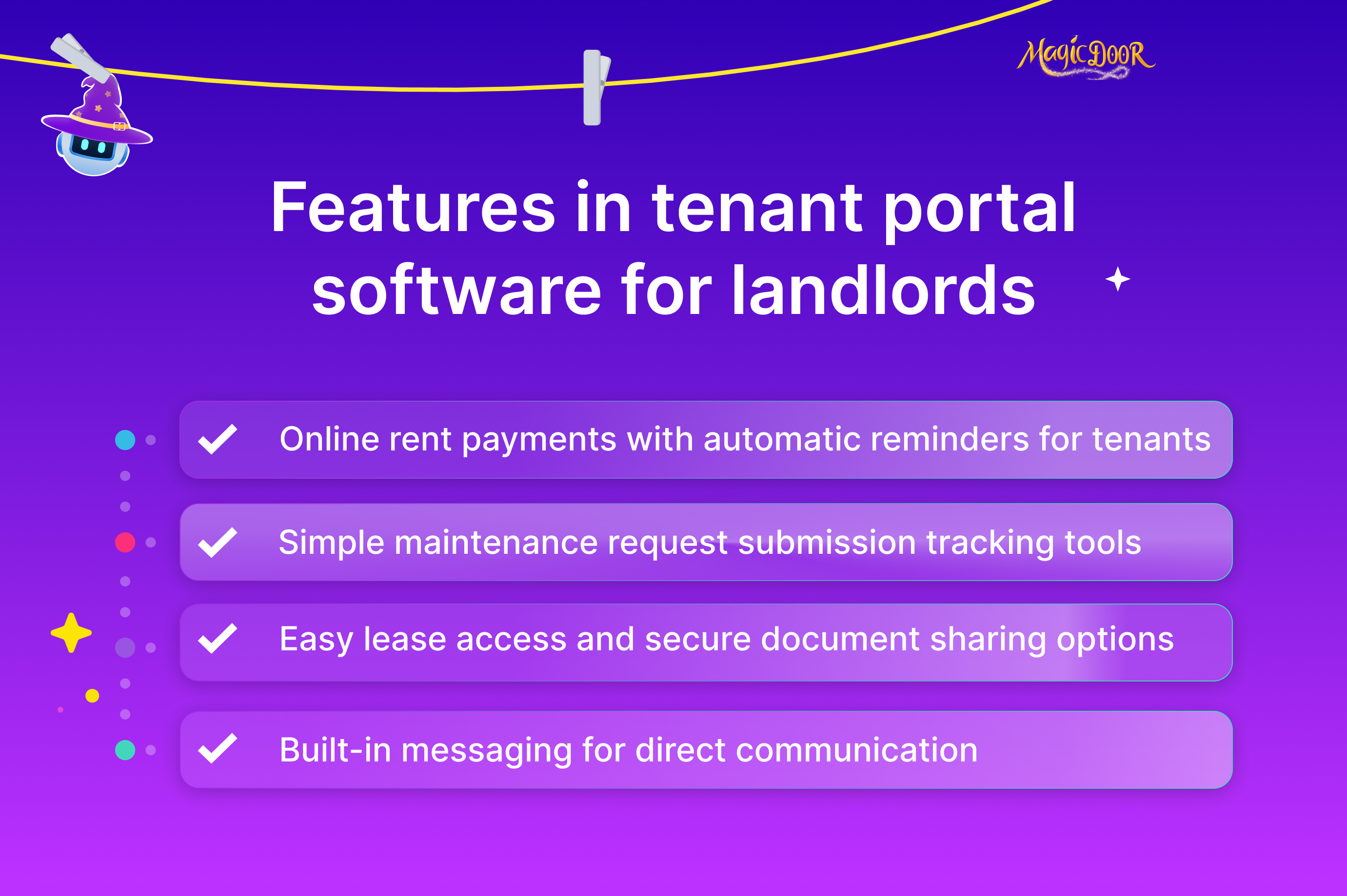
Online Rent Payments With Auto-Reminders
Online rent collection is the feature most tenants expect from a modern tenant portal. Instead of paper checks or manual transfers, tenants can pay rent online directly to a linked bank account.
For landlords and property managers, automated rent reminders reduce late payments and improve cash flow.
Key benefits include:
- Online payments with debit card, credit card, or ACH transfer
- Automated reminders before due dates and late fee tracking when payments are missed
- Real-time rent collection records that feed into property accounting and income reports
- Easier tax reporting with exportable financial reports
For small landlords, this feature cuts down on phone calls and makes rental management software feel less like a burden and more like a reliable property management tool.
Maintenance Request Submission & Tracking
![]()
Maintenance requests are a constant part of managing rental properties, and tenant portals make the process easier for both sides. Tenants can log issues instantly, anything from broken appliances to plumbing leaks, without waiting for a call back.
Property managers then track, assign, and close out repairs inside the platform.
Strong maintenance management features include:
- Digital submission of maintenance requests with photo or video uploads
- Automated updates that notify tenants when repairs are scheduled
- Vendor coordination tools for landlords and property management companies
- Centralized records for tax reports and property expenses
This level of maintenance tracking ensures landlords and property managers respond faster, reduce tenant frustration, and prevent small problems from turning into costly repairs.
Lease Access & Document Sharing
A strong tenant portal goes beyond rent payments, it also acts as a secure hub for documents. Tenants can review lease agreements, check updated lease terms, and download signed e-signatures at any time.
For property owners, this reduces back-and-forth and ensures everyone has the same information.
Look for portals that offer:
- Cloud storage for lease management and rental applications
- Role-based access so property managers and tenants see the right files
- Digital signatures for renewals, amendments, and new leases
- Easy export for property accounting, audits, or tax season
Centralized access builds trust and simplifies lease management for both landlords and tenants.
Built-In Messaging for Tenant-Landlord Communication
Good tenant communication is at the heart of rental management. A built-in messaging tool within the portal gives tenants and property managers a single place to handle updates, questions, and reminders.
No scattered emails or missed phone calls.
Messaging features worth highlighting:
- Direct chat for quick tenant communication about maintenance management or rent collection
- Automated notifications for due dates, inspections, or community notices
- Message history stored with each tenant profile in the property management software
- Customer support integration to resolve issues faster
This kind of integrated messaging improves the tenant experience, helps property managers track interactions, and keeps rental business communication professional and organized.
Top 11 Tenant Portal Software for Small Landlords (Updated 2025)
1. MagicDoor

MagicDoor is a tenant management software built specifically for small landlords who want automation without paying subscription fees. It focuses on core tenant portal features while keeping the platform simple enough for property owners managing a few rental properties.
Key features for tenant portal use:
- Online rent payments with automated reminders and late fee tracking
- Tenant maintenance requests logged, assigned, and tracked digitally
- Built-in messaging for tenant communication and lease reminders
- Secure storage for lease agreements, screening reports, and e-signatures
- Financial reporting with export-ready records for property management accounting
Notable customers include Rick Ruiz, Danny Cohen, and Henry Wuie, who use MagicDoor to streamline rent collection, automate maintenance management, and reduce the manual work of tenant communication.
2. TenantCloud

TenantCloud is a rental property management software designed for independent landlords. It offers a tenant portal that makes daily property management tasks easier for both tenants and owners.
Key features:
- Online rent payments with reminders
- Maintenance requests submitted through a tenant portal
- Lease management with e-signatures and document storage
Notable customers include small landlords managing residential properties and short-term rentals.
3. Rentec Direct
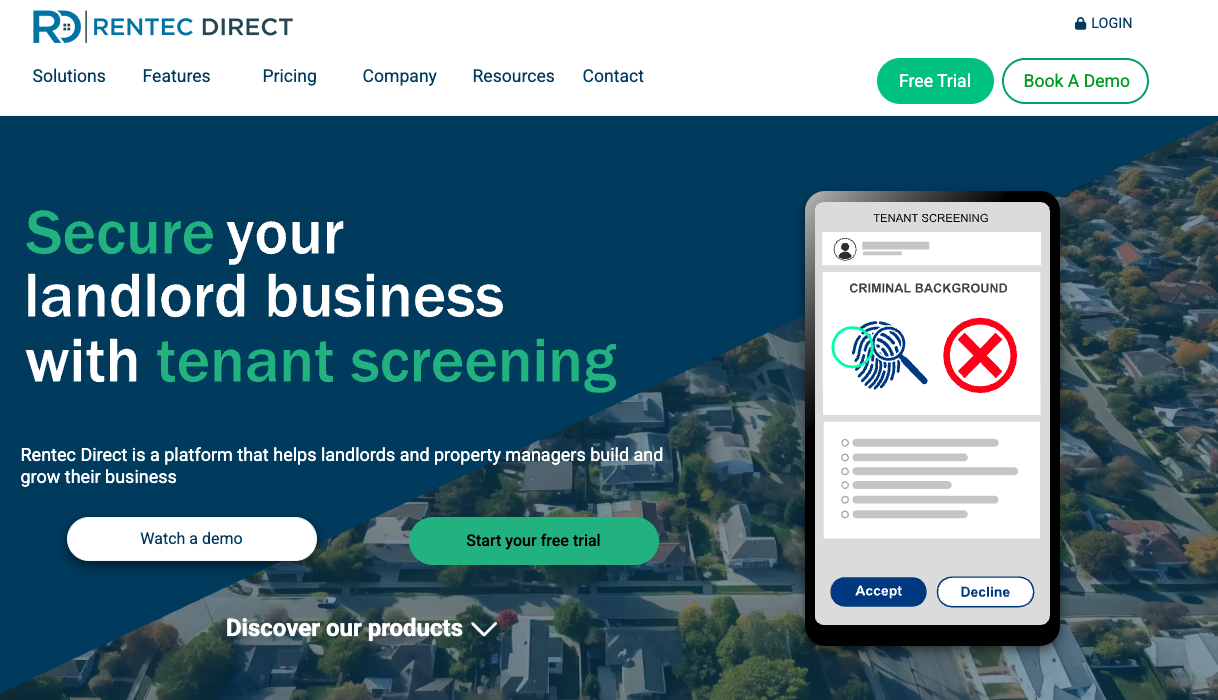
Rentec Direct provides property management tools tailored for small to midsize landlords. Its tenant portal helps property owners centralize rent collection, tenant communication, and maintenance tracking.
Key features:
- Online rent collection with late fee tracking
- Maintenance requests logged and tracked
- Secure tenant communication and document sharing
Clients include property owners running mixed portfolios who want reliable rental management software with accounting features.
4. Avail

Avail is a landlord software platform built for DIY landlords managing a handful of rental properties. Its tenant portal emphasizes ease of use and affordability.
Key features:
- Rent payments online with automated reminders
- Tenant screening reports with credit and background checks
- Lease management with customizable templates and e-signatures
Avail is widely used by first-time landlords who want accessible tools for tenant management without a steep learning curve.
5. Buildium

Buildium is a well-established property management software often used by professional property managers. It also serves landlords with smaller portfolios. Its tenant portal emphasizes financial clarity and secure tenant interactions.
Highlights:
- Rent collection with direct deposit and late fee automation
- Document storage for lease agreements and renewal notices
- Resident site for maintenance coordination and communication
Buildium is trusted by property management companies handling both residential and community associations.
6. AppFolio

AppFolio is a comprehensive real estate management software designed for larger portfolios, though smaller landlords can also benefit from its tenant portal. The focus is on scale and mobile accessibility.
What stands out:
- Mobile-first tenant portal for online rent payments
- In-app maintenance requests with progress updates
- Shared communication hub to reduce calls and emails
AppFolio is widely adopted by real estate professionals managing multifamily units, student housing, and mixed-use properties.
7. TurboTenant

TurboTenant positions itself as a landlord software platform built for DIY landlords. Its tenant portal is geared toward making tenant management simple and budget-friendly.
Portal capabilities:
- Rent collection with automated rent reminders
- Online rental applications and tenant screening reports
- Digital lease sharing with e-signatures
TurboTenant is commonly used by landlords managing one to five rental properties who need affordable tenant management software without a complicated setup.
8. RentRedi
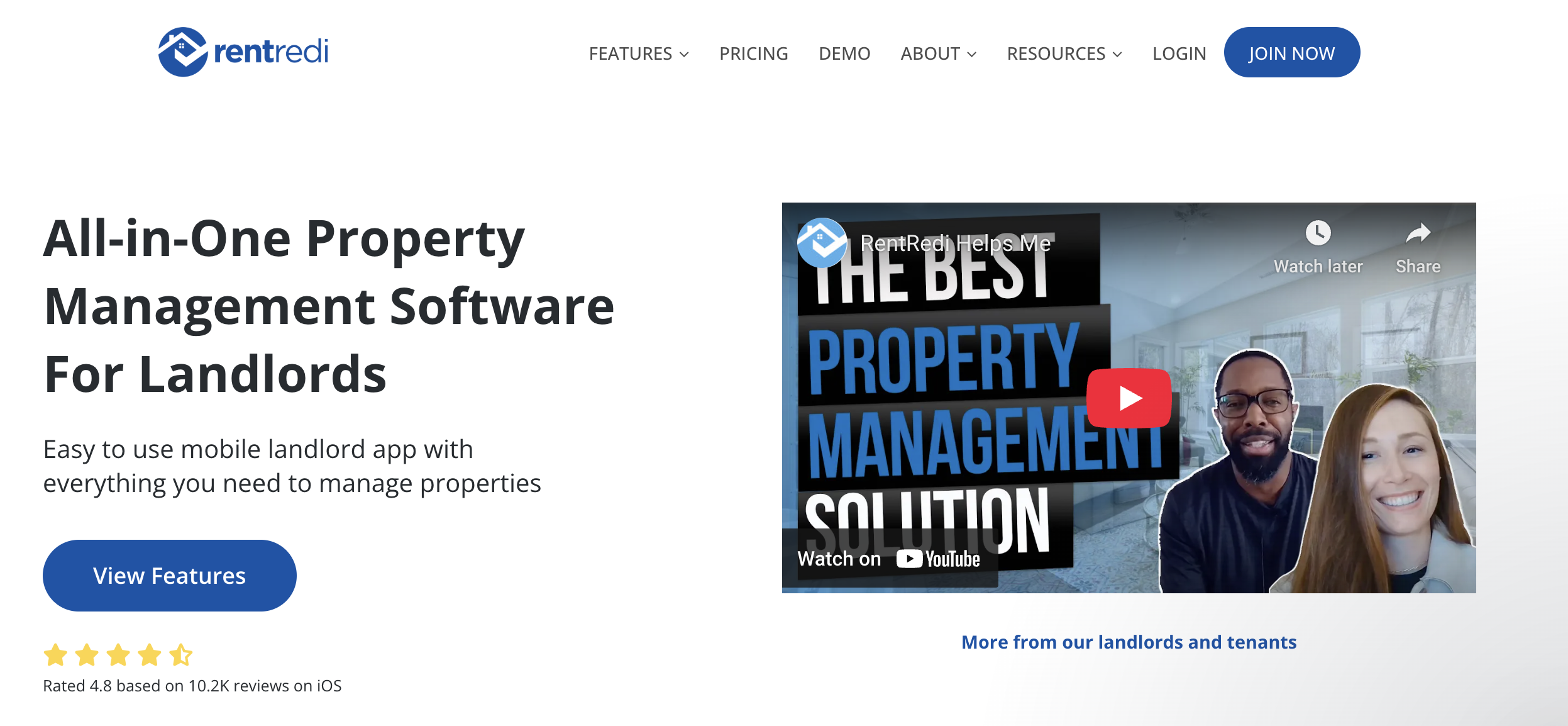
RentRedi is designed for small landlords who want mobile-friendly tools. The tenant portal focuses on convenience for both rent collection and communication.
Highlights:
- ACH, card, and cash payments through retail partners
- Maintenance requests with photo uploads
- Push notifications for tenant updates
Popular among first-time landlords managing a few rental units and looking for an affordable solution with strong mobile support.
9. Innago

Innago offers a free rental management software model, making it attractive to landlords with limited budgets. Its tenant portal balances simplicity with essential features.
Portal tools include:
- Rent payments and automated late fee tracking
- Maintenance requests routed to service vendors
- Document sharing for leases and notices
Innago is commonly used by property owners managing residential rentals or small mixed portfolios.
10. Hemlane
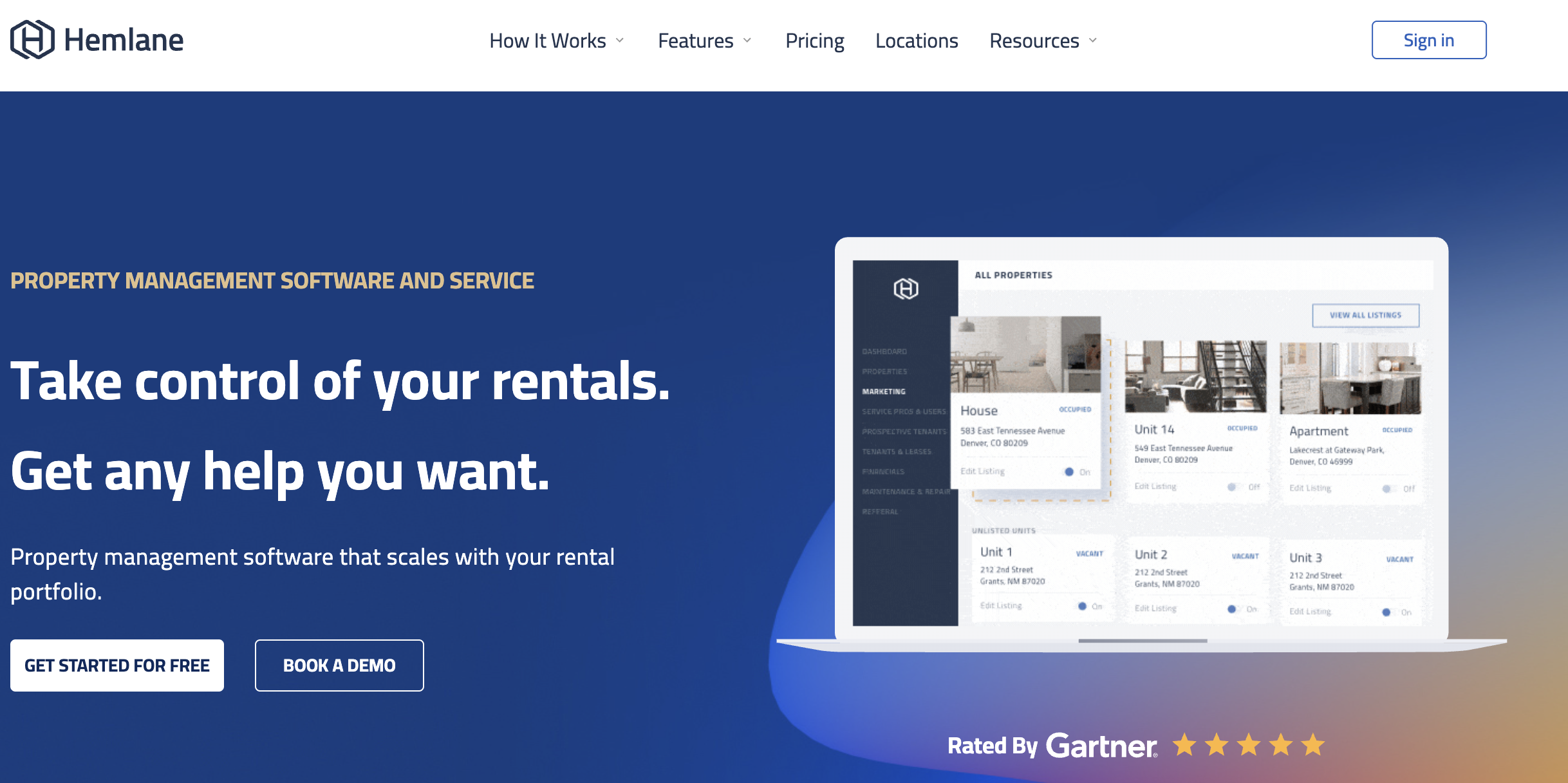
Hemlane emphasizes leasing and compliance features alongside its tenant portal. The system supports landlords who want more oversight without hiring a full-time property manager.
Capabilities:
- Online rent collection and recurring payments
- Maintenance coordination with local vendors
- Lease management with e-signature support
Hemlane is often chosen by landlords managing properties in different states who want oversight with built-in leasing workflows.
11. DoorLoop

DoorLoop markets itself as all-in-one rental property management software. The tenant portal supports both rent collection and streamlined communication.
Key functions:
- Rent collection with customizable payment schedules
- Maintenance tracking inside the portal
- Access to financial reports for landlords
DoorLoop works well for property management businesses handling larger portfolios, but can also be used by small landlords wanting professional-grade software.
How to Choose the Right Tenant Portal for Your Rental Business
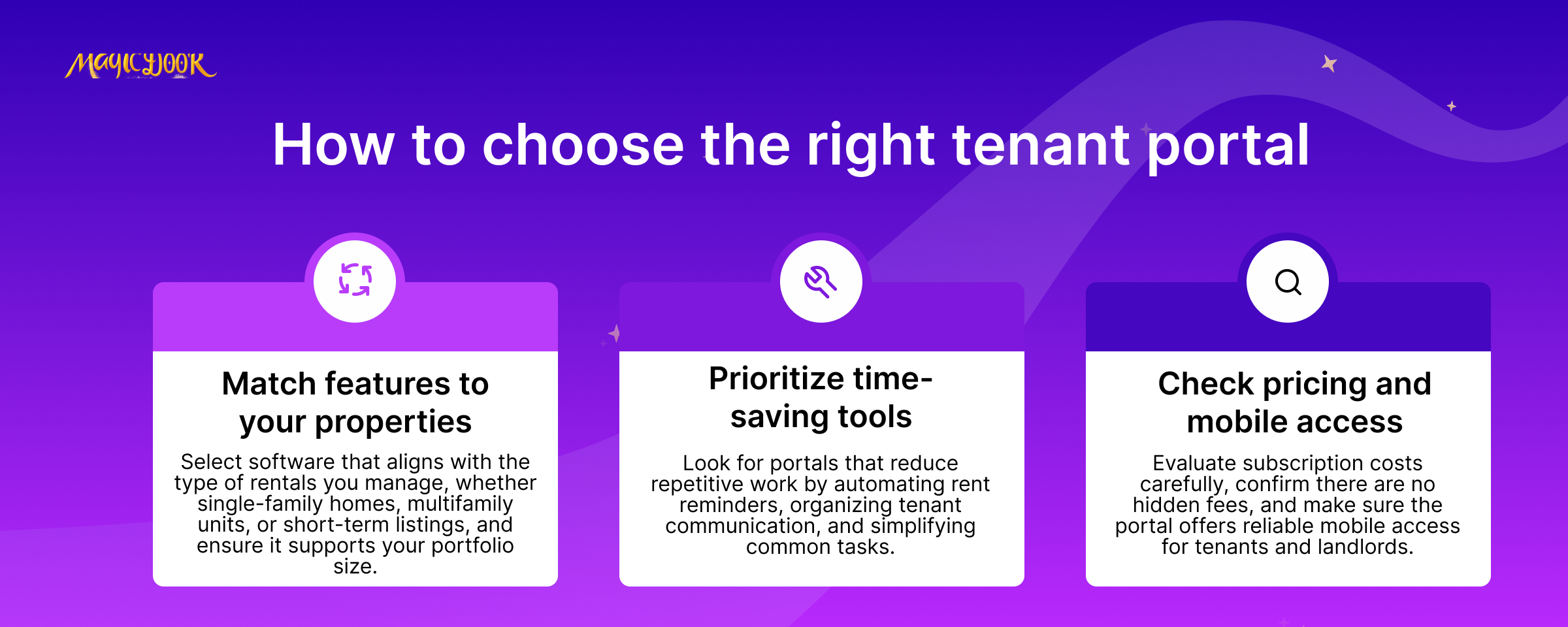
Match Features to Your Property Type & Number of Units
Not every landlord needs the same setup.
A single rental property doesn’t require the same level of automation as a mixed portfolio of residential and short-term rentals. Matching portal features to your property type and size prevents overspending on tools you won’t use.
Examples:
- Small landlords → focus on online rent collection, lease storage, and simple tenant communication.
- Mid-size portfolios → add maintenance request tracking, e-signatures, and property management accounting.
- Larger holdings → look for portals that integrate with full rental property management software to scale with your business.
Prioritize Portals That Save Time & Reduce Back-and-Forth
Administrative overload drains rental income faster than vacancies. Landlords often spend hours chasing late rent, logging maintenance requests, or clarifying lease terms with tenants.
The right portal cuts that cycle by automating repetitive tasks and giving everyone access to the same information.
Key time-savers:
- Automatic rent reminders and online payments linked to a bank account
- Centralized tenant communication instead of scattered calls and emails
- Maintenance tracking that logs, assigns, and updates requests without manual follow-up
- Digital document sharing for lease agreements and renewals
Look for Transparent Pricing & Mobile Access
Tenant portals come with a wide range of pricing models.
Some charge per unit, others offer free plans with limited features, and a few bundle everything into one subscription. Hidden fees, like charges for e-signatures or payment processing, can make affordable software more expensive than expected.
Mobile access also matters. Tenants expect to pay rent online, submit maintenance requests, or view lease agreements from their phone.
Landlords benefit too, with the ability to track cash flow and tenant activity on the go.
When evaluating portals, compare pricing structures carefully and make mobile access non-negotiable.
Manage Rent, Repairs, & Tenant Messages With MagicDoor
MagicDoor is a tenant portal built for small landlords who want modern automation without complicated software or monthly subscription fees.
It combines rent collection, maintenance tracking, and tenant communication in one easy-to-use platform.
Here’s what landlords and property owners can do with MagicDoor:
- Collect rent online: accept payments via direct deposit, apply late fees automatically, and track rental income in real time with built-in property management accounting.
- Handle maintenance requests: tenants submit repair tickets through the portal, while landlords can assign vendors, monitor progress, and keep complete maintenance records for audits or tax season.
- Centralize tenant communication: send updates, lease reminders, and important notices in one place instead of chasing scattered calls or emails.
- Store and share documents: lease agreements, screening reports, and renewals with e-signatures remain securely accessible for landlords and tenants.
For small landlords managing a handful of rental properties, MagicDoor feels like landlord software designed to scale.
It reduces manual work, improves tenant satisfaction, and gives property managers clarity on rent payments, repairs, and tenant communication, all without the burden of high software costs.
Conclusion
Tenant portals do more than add convenience.
They protect cash flow, cut down on avoidable mistakes, and help build stronger landlord–tenant relationships. Rent arrives on time. Repairs move faster. Communication becomes transparent.
Benefits at a glance:
- Automated rent collection and tracking
- Maintenance requests logged and resolved in one hub
- Clear communication that avoids misunderstandings
For landlords managing under 25 units (and more!), MagicDoor delivers all of this without subscription fees. That means more time to focus on growing your rental business, and fewer headaches in day-to-day management.

